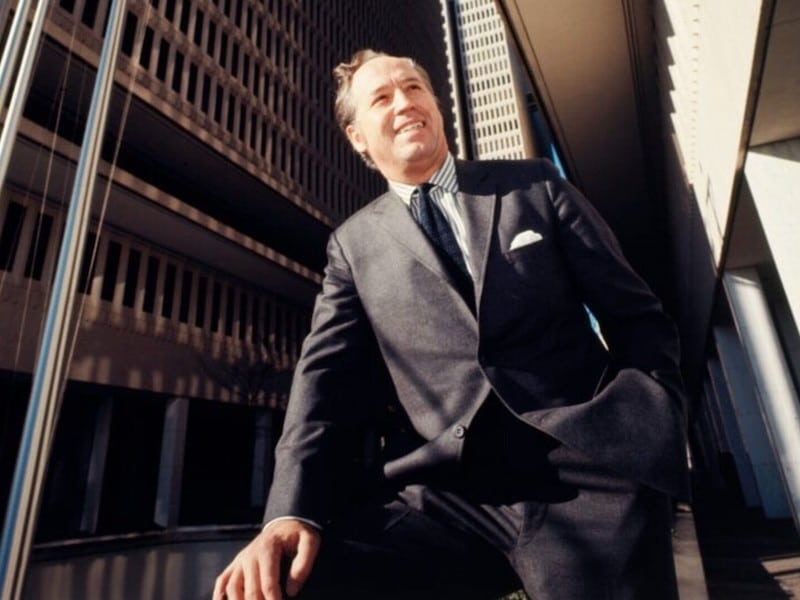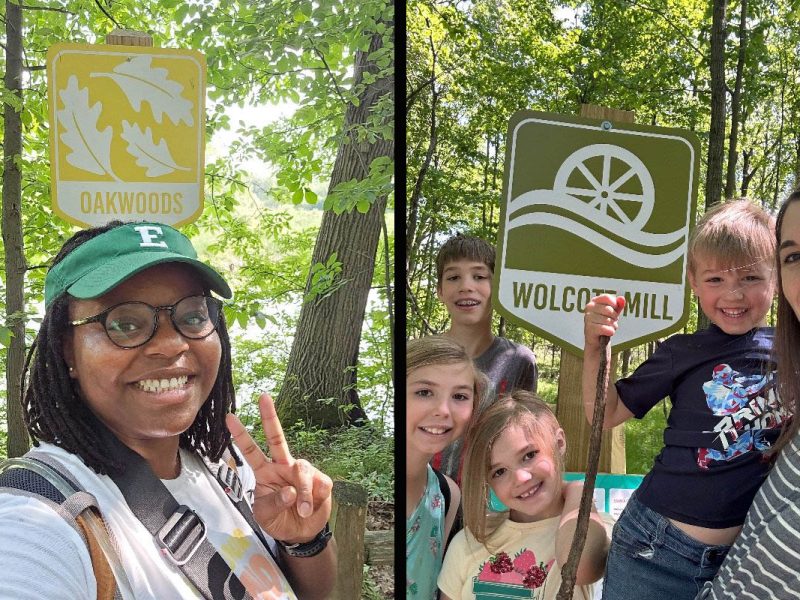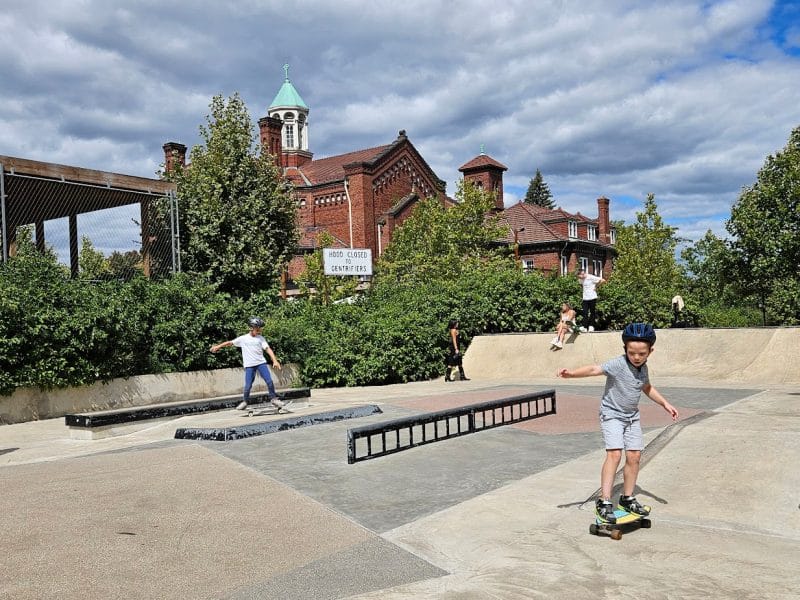Music Might = Revitalization
Twenty years ago, Manchester, England was about as torn up as Detroit has been over the last 20 years. In the world’s first industrial city, population and jobs were scant; vacancies and blight were prevalent. And then music took over. It was the late 80s and musicians and recording studios claimed empty lofts and buildings as their own. Entrepreneurs built clubs, bars and a bustling live rock scene. The city and local universities helped fuel the resurgence and supported the city’s new “gay village,” an area that speaks for itself along Manchester’s Canal Street.
Now Manchester is the thriving center of northern England. Many thank the smart marketing of the music scene and young people and gays who immigrated in droves for getting the city back on its feet.
Detroit could be next in line. The city’s musical wealth, current and historical, is vast. In fact one could argue that only New York can compete with Detroit when it comes to musical importance, and many of Gotham’s greats are imports. But when it comes to New York and Manchester and even Austin, Texas, home to the wildly successful South by Southwest music conference, these cities have made the most of their musical offerings—bringing tourists and journalists and musicians from the world over to listen and spend and maybe decide to move where the music engages.
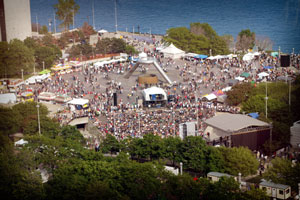 Detroit has a great opportunity in this arena, an opportunity to market itself and capitalize on its tonal excellence and plethora of venues.
Detroit has a great opportunity in this arena, an opportunity to market itself and capitalize on its tonal excellence and plethora of venues.
Already, 15 million visitors fly into Detroit every year; they spend $4 billion in the area, says Renee Monforton, spokesperson for the Detroit Metro Convention and Visitor’s Bureau. Last year the bureau put out a publication called Detroit Sounds and did a national media blitz on Detroit music.
“It piqued a lot of interest. Music is an industry we want to focus on whenever we can, through media and advertising dollars,” Monforton says. “Detroit is a music capital and we should have more events here.”
Despite struggles in the organization department, Detroit’s attempts at marketing its music via major events have been, if nothing else, a taste of what could be.
MC2
Amir Daiza wants to put Detroit’s musical offerings on the national stage. The longtime Detroit music promoter wants his Motor City Music Conference to be the next South by Southwest, to bring throngs of fans, musicians and journalists from around the nation. This year’s inaugural event, co-managed by Dana Forrester, was fraught with glitches in scheduling, communication and organization, but had its moments of glory, including a few good panel discussions and some great shows.
Daiza says more than 20,000 people attended the three-day conference and 1,200 bands applied to play—all despite the fact that the show was put together in four months.
“I’m hoping it’s a national event that attracts people from all over the world,” Daiza says. “We have a year to do the next one. It’s a no-brainer. We know what we’re doing. We’re promoting all of Detroit’s musical genres. This year we had blues, gospel, indie rock, punk, techno. We’re going to showcase all of it. Look at Seattle when the grunge scene happened. Detroit is bigger than that. You have superstars coming out of here. Go overseas and tell people you are from Detroit and they worship you. And it’s not about the cars.”
In addition to Daiza’s new venture is the stalwart Metro Times Blowout, a tremendous showcase of hundreds of local bands every year at various bars in Hamtramck. The show is always great, but so far it has not been marketed nationally.
And then there’s the techno fest, the show that shocked Detroit by bringing in tourists from Amsterdam, Berlin and Tokyo.
Tourists for techo?
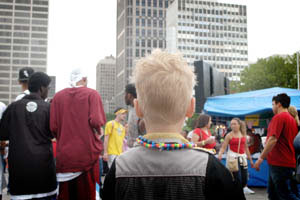 As I head to the techno fest with friends on Memorial Day weekend, the downtown streets, normally deserted on Saturdays, are teeming. Heading to Cobo Hall to get our festival passes, we walk through throngs of what you could call an extreme cultural fashion show—there’s a tall kid with a huge pink spike Mohawk and green blinking lights around his neck with a couple of girls sporting crowd-stopping yellow afros; a muscled African-American man in tight black leather leaning on his massive motorcycle while college kids gather around in visible awe; teens in hip hop gear looking like they’re from inner city Detroit; small children; foreigners; hip 30-somethings and plenty of suburban white kids. It’s a cornucopia of folks converged to check out the newest iteration of the techno fest, this year dubbed, “Fuse-in.”
As I head to the techno fest with friends on Memorial Day weekend, the downtown streets, normally deserted on Saturdays, are teeming. Heading to Cobo Hall to get our festival passes, we walk through throngs of what you could call an extreme cultural fashion show—there’s a tall kid with a huge pink spike Mohawk and green blinking lights around his neck with a couple of girls sporting crowd-stopping yellow afros; a muscled African-American man in tight black leather leaning on his massive motorcycle while college kids gather around in visible awe; teens in hip hop gear looking like they’re from inner city Detroit; small children; foreigners; hip 30-somethings and plenty of suburban white kids. It’s a cornucopia of folks converged to check out the newest iteration of the techno fest, this year dubbed, “Fuse-in.”
Nik and Pritha Mittal of Manhattan are attending for the first time. As we sit at the main stage listening to local hip hop group Slum Village, we watch people madly dancing on the center floor, including a few large 50-somethings with sweat-soaked T-shirts, shorts and sandals and a gay couple in bright pink and black mesh. Two Japanese teens stand nearby with their eyes closed, gyrating to the music; wide grins on their faces.
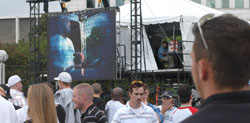 As in years past, the techno fest provides a mix of incredible, mediocre and sometimes extremely loud music along with a funky, diverse crowd. The event this year has a very organic feel, not as corporate, flashy or young as in years past and less international. The showcase includes major acts like hip hop icon Mos Def along with local performers. For the first time the festival features stages run by well-respected local music promoters–Underground Resistance and Paxahau.
As in years past, the techno fest provides a mix of incredible, mediocre and sometimes extremely loud music along with a funky, diverse crowd. The event this year has a very organic feel, not as corporate, flashy or young as in years past and less international. The showcase includes major acts like hip hop icon Mos Def along with local performers. For the first time the festival features stages run by well-respected local music promoters–Underground Resistance and Paxahau.
The Mittals say Fuse-in reminds them of the summer music series held by NYC’s P.S.1., now part of the Museum of Modern Art, except less packed. P.S.1. is on the cutting edge, even in New York, so the comparison is a good one, for Detroit.
In 2001, I talked with another couple of New Yorkers at the festival. The guy, Reggie Bradford, at the time worked for MTV2; his wife, Myra, operated a Brooklyn music mag.
“This is so cool, New York should have something like this,” Myra had said.
Wait, New York should have something like Detroit?
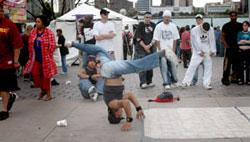 The Bradfords and the Mittals are drawn to the same thing—the mix of music and people at Detroit’s techno fest. Always, the event’s highlight, short of some mind-bending shows, is experiencing so many different humans—in terms of race, stylistic tastes, age and apparent economic levels—enjoying themselves within Detroit’s riverside urban setting.
The Bradfords and the Mittals are drawn to the same thing—the mix of music and people at Detroit’s techno fest. Always, the event’s highlight, short of some mind-bending shows, is experiencing so many different humans—in terms of race, stylistic tastes, age and apparent economic levels—enjoying themselves within Detroit’s riverside urban setting.
Dance circles all over the fest this year feature hard-core city dancers—the best among them a young woman—spinning and popping right along with small-town kids. At one point a local homeless guy in a tattered overcoat joins in the mix with some serious dancers to great humorous effect.
As always, it’s a little odd to see mostly black Detroit djs playing to mostly suburban white kids. But hey, musical taste knows no boundaries and the festival is proof of that.
This year’s organizer, techno pioneer Kevin Saunderson, saw to it, as did prior organizers and fest co-founder DJ Carl Craig, that hip hop is mixed in. The festival is special in this way, in that it blends hip hop and techno music and fans, the urban and the suburban, in a virtual message to worldwide club kids, saying, “Hey, meet Detroit, where techno comes from. Detroit, meet your foreign fans.”
Ticket sales were the big unknown this year. The city had to make a special concession to allow Fuse-in to charge for entrance; all Hart Plaza events are free. The festival charged because sponsorship dollars were slow in coming. Saunderson says the festival will need ticket sales in the future, along with sponsorships, to cover its approximate $1 million cost.
Jay Dolata, Fuse-in’s press agent, says 38,362 $10 tickets were sold and 2,838, $25 tickets. While that number might seem small, earlier estimates of 1 million attendees the first year were highly exaggerated. Fuse-in was almost—not quite–as attended as the fest ever was.
Some 20 percent of the media at the event was international, Dolata says; reporters hailed from Germany, Italy, Mexico, Japan, Australia, South African and many from the Netherlands, where Detroit techno is huge.
But of course the fest has its good, bad and ugly.
“At times I found the festival poorly organized, with it hard to determine who, with what type of style, was going to be where—and the cacophony in the middle. It was like a weightlifting contest with all the vendors seeing whose stereo could go the loudest. Overall I really did enjoy it, but I think it could use better organization,” Nik Mittal says.
He’s got a point. In most of the festival’s six years, approval from the city, permitting and festival lineups occur within weeks of the first act. This year, nobody knew the festival would take place until a month before. It’s a grassroots, underground-ish effort, indeed, but such things can be taken to extreme.
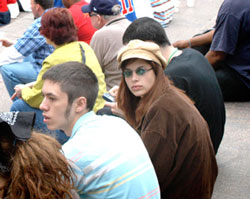 “The international presence is lower each year because of late marketing and the announcement of the lineup,” Saunderson says.
“The international presence is lower each year because of late marketing and the announcement of the lineup,” Saunderson says.
Next year will be more organized and the lineup will be announced no later than early February, Saunderson says. Other changes could take place, such as starting the festival on Friday and later in the day. Package deals might be offered, and marketing will begin soon, he says.
“Nobody really knows the impact this festival can have on our city,” Saunderson says. “All we need is time.”
Indeed, 2006 is a big test year. The question is, Can it happen? Can Fuse-in and MC2, maybe even Blowout, become major national events that help re-invigorate Detroit’s inner city? Can the same community of artists who wither at the mention of “marketing,” and the city with a historical tin ear to the tempo of coordinated efforts get together to make Detroit a national music lover’s destination?
Only time will tell.
